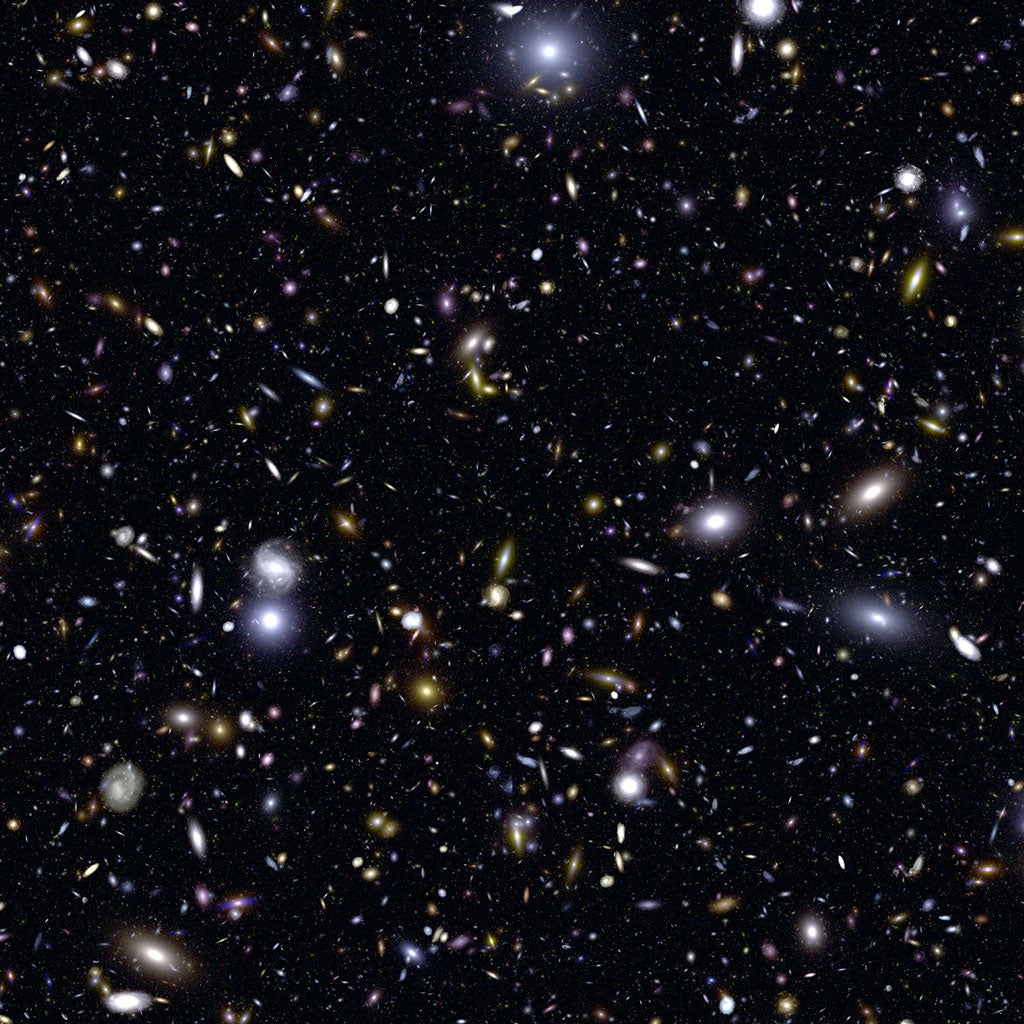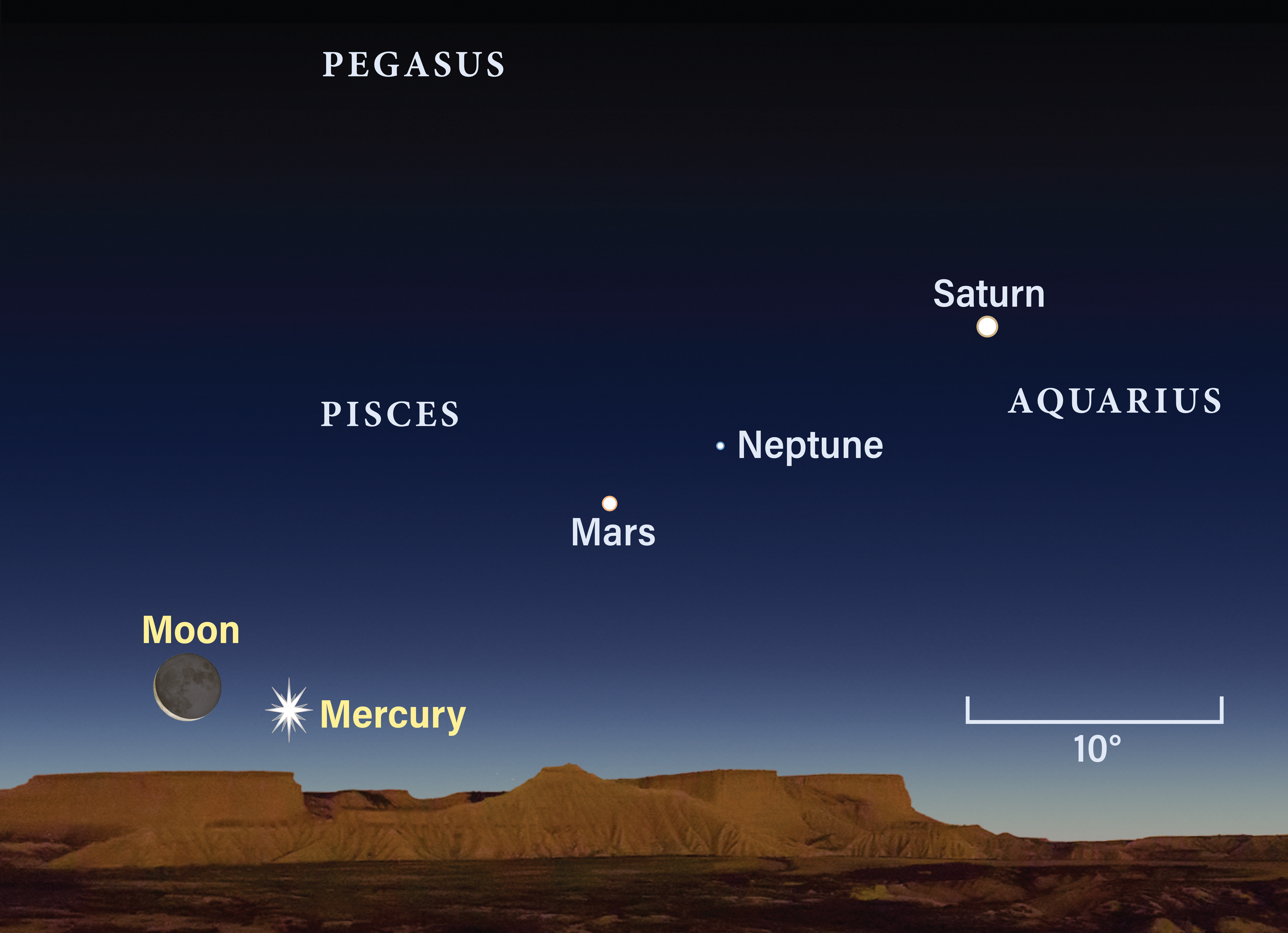
Recent announcements from the James Webb Space Telescope (JWST) team have shown galaxies in the very early universe are far more advanced, mature, and evolved than they ought to be. But that might be because we’ve been systematically overestimating the distances of those galaxies, as new research demonstrates.
Measuring distances in space is a tricky business. It’s not always easy to discern whether a bright and/or large galaxy is relatively close, or whether it’s physically large and bright. Over the decades, astronomers have developed a plethora of techniques to get around this issue. The majority of those techniques provide reliable results most precisely in the relatively local universe. For very distant galaxies, like the ones JWST targets, we are forced to use much less precise methods.
Instead of directly measuring distances to extremely distant galaxies, astronomers try to determine their redshifts. A redshift represents the change in a galaxy’s light spectrum due to its movement away from us because of the expansion of the universe. While it’s possible to convert a redshift into a distance, astronomers need to assume a cosmological model to do it. In other words, assume a certain amount of dark energy, dark matter, or other parameters that affect the expansion rate of the universe.
So, astronomers usually just report the redshift and move on. In general, the greater the redshift, the more distant a galaxy is from us, which is what we really care about anyway.
JWST has been able to discover galaxies with redshifts of 9 to 14, representing some of the most distant galaxies ever found, floating very far away in the infant cosmos.
Redshift measurement methods
No matter how you count it, these galaxies are among the first to ever appear on the cosmic scene. So it’s puzzling that some of their structures appear to be surprisingly mature for their young ages. Some of the extremely distant galaxies are large, contain lots of stars, and have lots of heavy elements that require multiple generations of stars to produce.
But those surprising results were based on one particular method for measuring the redshift — a method that isn’t all that accurate. The method, known as photometric redshift measurement, takes the light from a galaxy and sorts it into bins. Astronomers then compare the light in those bins to the same light from nearby galaxies to get a rough estimate of a redshift.
While rather uncertain, this method has the advantage of being quick and easy to do, so astronomers can easily gather a large sample of redshift measurements without having to do a lot of extra work.
In a follow-up paper submitted for publication and appearing on the preprint arXiv, a pair of astronomers compared two dozen photometric redshifts with the redshifts obtained by a more accurate method: spectroscopy. Spectroscopic redshifts involve gathering a galaxy’s detailed spectrum first and then using it to measure redshift. While longer and more complicated, the process yields incredibly accurate redshift measurements.
Evidence of inflated redshift
The researchers found that in their sample almost all photometric redshifts were biased to be higher than the spectroscopic ones. In other words, the rough estimate produced a redshift that was almost always higher than the true redshift. For some galaxies the difference was small, but for others it was huge. In one case, the photometric estimate of the redshift yielded 11.5, while the true redshift was less than 9. This is a difference of billions of light-years.
Overall, the researchers found that the photometric redshifts had to be toned down by roughly one standard deviation. This means that when the photometric redshifts were reported along with their uncertainties, the true redshift lies near the lower end of that uncertainty range, not the middle, as we would expect with a bunch of random uncertainties.
This is not a new phenomenon, researchers pointed out. In fact, it’s something the great astronomer Sir Arthur Eddington first pointed out in 1913 in the context of surveys of distant stars. We expect photometric measurements to be imprecise, but in a random way; roughly half the galaxies should show a redshift that’s too large, and the other half too low.
But since JWST is probing the extremely early universe and the first generation of galaxies to appear on the cosmic scene, more galaxies exist closer to us than farther away. This means more chances exist in which galaxies could be biased high rather than low, and so our overall samples will tend to be biased.
It’s unclear at this stage how these more refined redshift measurements will change our understanding of the early universe, and especially how it will impact our view of those young yet mature galaxies. But, this result shows exactly how science is supposed to work. Over time, it’s always careful, always cross-checking, and always refining.








